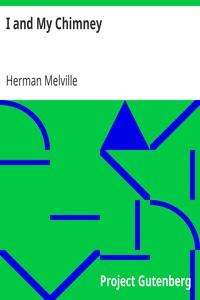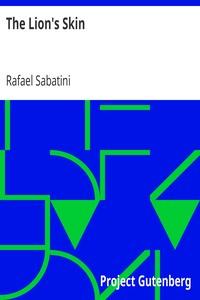Read this ebook for free! No credit card needed, absolutely nothing to pay.
Words: 141904 in 34 pages
This is an ebook sharing website. You can read the uploaded ebooks for free here. No credit cards needed, nothing to pay. If you want to own a digital copy of the ebook, or want to read offline with your favorite ebook-reader, then you can choose to buy and download the ebook.


: Elsie Venner by Holmes Oliver Wendell - Didactic fiction; Paranormal fiction; Predestination Fiction; Birthmarks Fiction
ELSIE VENNER
PREFACE
This tale was published in successive parts in the "Atlantic Monthly," under the name of "The Professor's Story," the first number having appeared in the third week of December, 1859. The critic who is curious in coincidences must refer to the Magazine for the date of publication of the chapter he is examining.
In calling this narrative a "romance," the Author wishes to make sure of being indulged in the common privileges of the poetic license. Through all the disguise of fiction a grave scientific doctrine may be detected lying beneath some of the delineations of character. He has used this doctrine as a part of the machinery of his story without pledging his absolute belief in it to the extent to which it is asserted or implied. It was adopted as a convenient medium of truth rather than as an accepted scientific conclusion. The reader must judge for himself what is the value of various stories cited from old authors. He must decide how much of what has been told he can accept either as having actually happened, or as possible and more or less probable. The Author must be permitted, however, to say here, in his personal character, and as responsible to the students of the human mind and body, that since this story has been in progress he has received the most startling confirmation of the possibility of the existence of a character like that which he had drawn as a purely imaginary conception in Elsie Venner.
BOSTON, January, 1861.
A SECOND PREFACE.
This is the story which a dear old lady, my very good friend, spoke of as "a medicated novel," and quite properly refused to read. I was always pleased with her discriminating criticism. It is a medicated novel, and if she wished to read for mere amusement and helpful recreation there was no need of troubling herself with a story written with a different end in view.
This story has called forth so many curious inquiries that it seems worth while to answer the more important questions which have occurred to its readers.
In the first place, it is not based on any well-ascertained physiological fact. There are old fables about patients who have barked like dogs or crowed like cocks, after being bitten or wounded by those animals. There is nothing impossible in the idea that Romulus and Remus may have imbibed wolfish traits of character from the wet nurse the legend assigned them, but the legend is not sound history, and the supposition is nothing more than a speculative fancy. Still, there is a limbo of curious evidence bearing on the subject of pre-natal influences sufficient to form the starting-point of an imaginative composition.
The real aim, of the story was to test the doctrine of "original sin" and human responsibility for the disordered volition coming under that technical denomination. Was Elsie Venner, poisoned by the venom of a crotalus before she was born, morally responsible for the "volitional" aberrations, which translated into acts become what is known as sin, and, it may be, what is punished as crime? If, on presentation of the evidence, she becomes by the verdict of the human conscience a proper object of divine pity and not of divine wrath, as a subject of moral poisoning, wherein lies the difference between her position at the bar of judgment, human or divine, and that of the unfortunate victim who received a moral poison from a remote ancestor before he drew his first breath?
It might be supposed that the character of Elsie Veneer was suggested by some of the fabulous personages of classical or mediaeval story. I remember that a French critic spoke of her as cette pauvre Melusine. I ought to have been ashamed, perhaps, but I had, not the slightest idea who Melusina was until I hunted up the story, and found that she was a fairy, who for some offence was changed every Saturday to a serpent from her waist downward. I was of course familiar with Keats's Lamia, another imaginary being, the subject of magical transformation into a serpent. My story was well advanced before Hawthorne's wonderful "Marble Faun," which might be thought to have furnished me with the hint of a mixed nature,--human, with an alien element,--was published or known to me. So that my poor heroine found her origin, not in fable or romance, but in a physiological conception fertilized by a theological dogma.
January 23, 1883.
Free books android app tbrJar TBR JAR Read Free books online gutenberg
More posts by @FreeBooks

: Jeff Briggs's Love Story by Harte Bret - Western stories; American fiction 19th century; California Fiction








